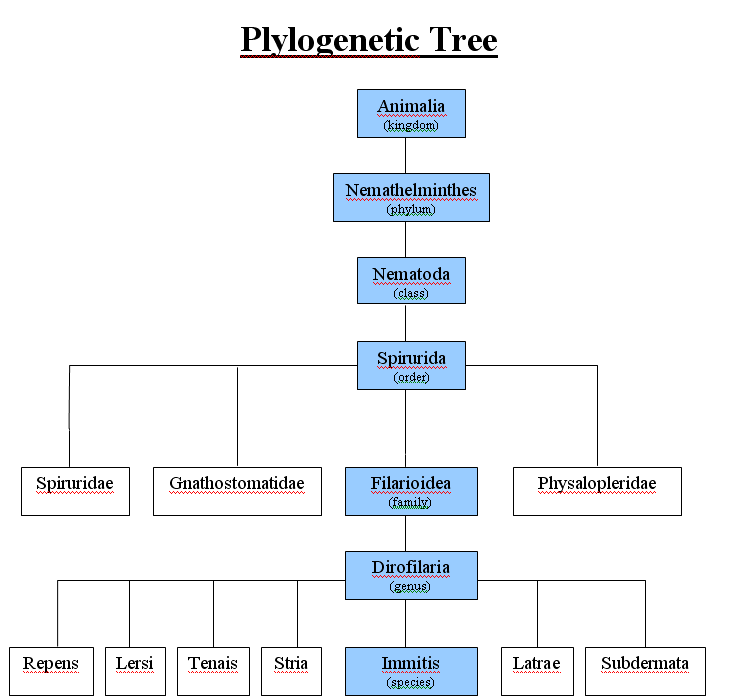
|
Domain: Eukarya
The broadest classification of an organism is the domain. The three domains that organisms can be classified into include Archea, Bacteria, and Eukarya. The Archaea are prokaryotic cells with cell walls that contain no peptidoglycan. The Bacteria are also prokaryotic cells, but their cells walls contain peptidoglycan. Dirofilaria immitis is classified under Eukarya. Eukaryotes have more complex eukaryotic cells. Not all eukaryotes have cell walls, but of those that do, none contain peptidoglycan. The Eukarya are divided into four kingdoms which include Protista, Fungi, Plantae, and Animalia (Kaiser 2007).
Kingdom: Animalia
Organisms classified under Kingdom Animalia are multicellular and are composed of eukaryotic cells. Cells lack cell walls and are organized into tissues. Animals do not carry out photosynthesis like plants, rather they are heterotrophic and get their nutrients mostly through ingestion (Kaiser 2007).
Phylum: Nemathelminthes
Members of this phylum, which Dirofilaria immitis fits into, have a straight line intestine with a posterior anus. Their body cavity lacks mesodermal lining so they have a pseudocoel (Nolan 2002).
Class: Nematoda
Nematodes, also known as roundworms, get their name because of their round shape. Members of this class have a pseudocoelom, which means they lack mesodermal tissue. Nematodes are also unsegmented, bilaterally symmetric, and have a tubular digestive tract passing from the mouth to anus.
Order: Spirurida
Dirofilaria immitis is put into the order Spirurida because they possess characteristics such as two lips, having arthropods as intermediate hosts, and having vertebrates as definitive hosts (PHYLUM…).
Family: Filariidae
Dirofilaria immitis is a member of this family due to the main characteristics of lacking a buccal capsule, and in the male worms the shape and size of spicules. Members of this family are most commonly described as threadlike nematode helminms with different sizes (Nematodes…).
Genus: Dirofilaria
This genus is made up of filarial nematodes. Species: immitis
|

Phylogenetic tree produced by Greg Eddy